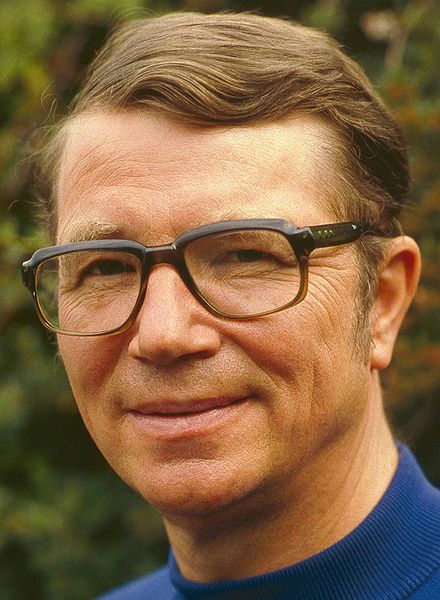A Great Loss: Colin Wilson Passes
It was 35 years ago. A young and dumb kid—we’d call him a “geek” today—went to the newsstand to pick up some of the latest issues of Thor, The Avengers, Doctor Strange, Conan, and the Fantastic Four. He also looked quickly through the rest of the magazines at the large newsstand, seeing one he’d never seen before.
It was called Gnostica, and it was published by Llewellyn.
Yes, that geeky kid was me. I was also going to Gilbert’s Books around the corner. They had one of the best new and used occult sections in town, and it was rumored that Israel Regardie used to hang out there. Gilbert’s is long gone. A smaller version of the newsstand is still there.
Gnostica was just amazing. I eventually collected a complete set of the magazine. The writers of articles became the authors of today. One frequent contributor was Colin Wilson. The first issue I read included an article beginning on page 12, Colin Wilson’s introduction to The Necronomicon. This edition of the book, edited by George Hay, was not readily available in the U.S.
Colin Wilson
June 26, 1931—December 5, 2013
Photo by Tom Ordelman Thor NL
Wilson wrote articles and letters to Gnostica. This led me to deeply admire his writing. His book, The Occult: a History, is a classic, including sections on Crowley, Gurdjieff, Blavatsky, the Kabbalah, primitive magic, Mesmer, Rasputin, D.D. Home, and Paracelsus. He later wrote books on the paranormal and UFOs, including Strange Powers: Astral Projection, Reincarnation, Dowsing, Spirit Writing and various other occult topics. He also wrote science fiction and horror fiction, including the book, The Space Vampires which Tobe Hooper made into the movie Lifeforce. According to Wikipedia, Wilson thought this was the worst film adaptation of any book.
Later, Wilson wrote several biographical books on occultists and so-called “fringe” personalities such as Hermann Hesse, Wilhelm Reich, and Jorge Luis Borges. This included a short worked entitled Aleister Crowley: The Nature of the Beast. I had hoped this would give some insight into the motivations for Crowley’s actions and beliefs. It didn’t fulfill my expectations. As a result, when I read this book in 1987, I began to lose interest in Wilson as a writer on the occult. His book had far more to say about Wilson than about Crowley. To me it showed an inward focus and an interpretation of the world from a unique and incisive perspective. So ignoring his fiction and occult writings, I turned to his more philosophical books. After all, I had majored in philosophy in college.
That is when I discovered his first book, The Outsider. Simply put, this book is one of the most important books of the 20th century, marking him as one of the leading lights of the “Angry Young Men” movement in existentialism. What he presented in that book was a simple concept: the great and unique thinkers throughout history were alienated from society and considered to be “outsiders,” both by society and by themselves. He saw this and described this in figures including, Albert Camus, Jean-Paul Sartre, Ernest Hemingway, Hermann Hesse, Fyodor Dostoyevsky, William James, T. E. Lawrence, Vaslav Nijinsky, and Vincent van Gogh. I could name this in dozens of others, including Wagner, Beethoven, Tesla, and maybe even Steve Jobs.
Even more importantly, I’ve seen that feeling of being weird, being an outsider, being a geek, among so many occultists. We’re just not part of the mainstream. I’ve often felt this way. Wilson’s book provides a sense of pride: Yes, you are different! Be proud of that difference because it is the Outsider, like you, who, throughout history, has moved the world forward. I describe part of this concept in my book, Modern Sex Magick.
And now, Wilson, the great Outsider, the Angry Young Man, has moved further outside than ever before. I wish him peace on his journey.








I have a copy of his fiction book, The Philosophers Stone, that I cherish. He will be missed.
Very well written and has piqued my interest in other readings…thank you.
Its a good thing I checked your blog otherwise I would never have known that Colin Wilson had died. His death would normally have been reported on the news here but was overshadowed by that of Nelson Mandela on the same day. In a similar way the deaths of Aldous Huxley and C S Lewis were overshadowed by the assassination of President Kennedy on the same day.
What I particularly liked about his books was his fundamental optimism and his intellectual range. I was in college majoring in Mathematics when I first encountered books like “The Order of Assassins” , “Introduction to the New Existentialism” and “The Strength to dream”. It was exhilarating. A whole new world of philosophy and literature.
By the way Don thanks for an interesting webinar. There do seem to have been a few gremlins however. On a previous occasion it was payments that were not being accepted. On this occasion all emails about upcoming thelesis events were being directed to my spam folder which I don’t normally check. It was only by luck that I checked your blog and learnt about the event a day or so before. Perhaps you should banish those gremlins!
Thank you Donald for this wonderful article. I found your quote “The writers of articles became the authors of today”, very inspiring. May peace be with Colin Wilson, and may we all continue to find strength and encouragement in our journey as Outsiders.
Colin Wilson’s death gives me a heavy heart. He was a serious student of the occult & uniquely straight forward. I admired all of his work and assumed, as one of The Immortals, he would go on bringing us the treasures of his findings forever. RIP, Colin.